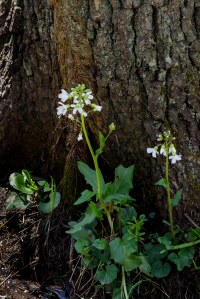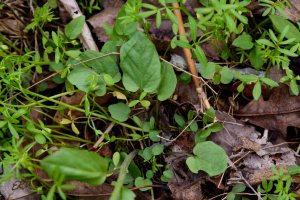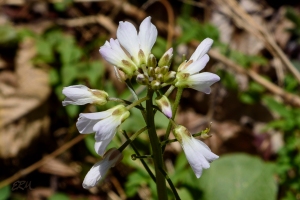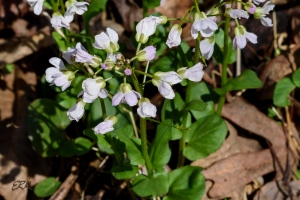 I should have written a little more about Obolaria in yesterday’s post, which I realized when someone asked a question in the comments.
I should have written a little more about Obolaria in yesterday’s post, which I realized when someone asked a question in the comments.
The thing is, very little is known about this plant. I was able to find one paper* on the subject; in the introduction, the authors state:
Although morphological descriptions of O.virginica exist in various floras (e.g., Radford et al. 1968, Fernald 1970, Wood and Weaver1982, Gleason and Cronquist 1991), information about reproductive capacity or ecological parameters that might influence growth and development is lacking. For example, no information exists about the pollination biology of pennywort, nor have there been any studies to examine basic soil parameters to determine optimal growing conditions of this species.
The paper is interesting, but has no further discussion of pollinators.
I’m not patient enough to sit and watch a stand of Obolaria to see what, if any, insects come to visit. It would be an interesting project, though.
*Notes on the Biology of Obolaria virginica (Gentianaceae) in Southeast Missouri, and the Effects of Leaf Litter on Emergence and Flower Production
Diane L. Wood and Allan J. Bornstein
Department of Biology, Southeast Missouri State University
One University Plaza, Cape Girardeau, Missouri 63701























